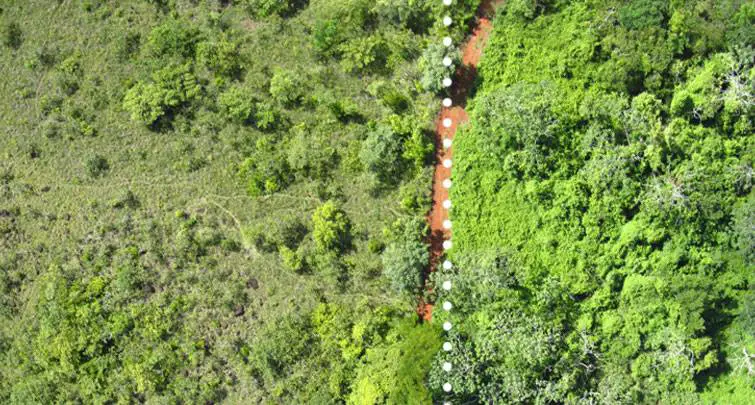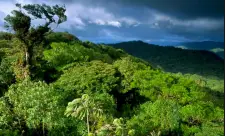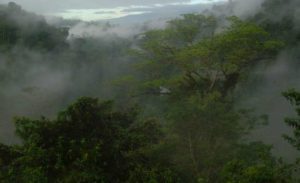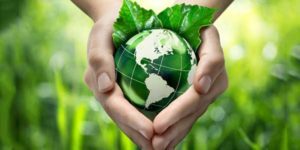In 50,000 km2 of terrestrial territory, which represents 0.001% of the world extension, there inhabits 5% of the known biological diversity of our planet. If biological wealth is related to the size of the territory, it is considered that Costa Rica is the country with the highest biodiversity on the planet.

The data on this eco-wealth can be found in the “V” National Report submitted to the Convention on Biological Diversity in Costa Rica in 2014, by the Ministry of Environment and Energy (MINAE) and the National System of Conservation Areas (SINAC).
Costa Rica has become the only tropical country to reverse its deforestation rate, increasing its forest cover from 21% in 1987 to 52.3% in recent years. In total, the Central American country has regenerated 2.83 million hectares of native forests. This has associated carbon benefits that offset an estimated 81% of the emissions projected for that country by 2021, according to the most recent study on forest cover, published by the German International Cooperation Agency (GIZ).
This study has been able to give a more accurate account of the carbon sequestration and the amount of hectares by type of coverage, thanks to the use of 168 satellite images and more than 300 verification diagrams for studying the whole country, and the application of “RapidEye” technology, with its high spatial resolution of 5 x 5 meters.
This is a great achievement, especially considering that in 1985 the rate of deforestation in Costa Rica was the highest in the world, with 3.4% annual for the period 1950-1985, which meant more than 2.5 million hectares lost in the country in four decades, and that for 1987 there was only 21% forest cover. In the 80s, about 25% of the national territory was covered by forest, while in 2013 the percentage of coverage increased to 52.38%; that is to say, the forest areas doubled in the last two decades.
The forests went from being a quarter of the territory to become more than half. That forest cover is capable of absorbing a large amount of carbon dioxide from the atmosphere. This means that there is a real commitment by the country to recover forests instead of losing them without control.
There have been several efforts that have contributed to this growth, among them the prohibition of inadequate land use, change established by Forest Law 7575 of 1996 and the implementation, since 1997, of the PSA program. The new Forestry Law marked a significant change after several decades where deforestation and the change of land use for livestock and agriculture had significantly reduced the percentage of forest cover.
In the year 2000 forest cover areas were around 40% of the territory and since then it has not stopped growing. The main recovery areas have been Guanacaste (sectors of the North Zone and the Central Pacific). One of the reasons why Guanacaste managed to recover a significant amount of forest is that, due to market causes, international prices of meat fell and livestock activity stopped having the same intensity as in the 70s and 80s.
PSA. Anyone who owns forests or forest plantations has the opportunity to receive a double prize: firstly, the satisfaction of contributing to their well-being by conserving our country’s natural treasure, and also, receiving an economic remuneration for protecting services, tangible and intangible. This is what the National Payment Program for Environmental Services (PSA) of “Fonafifo” pursues, an entity that is responsible for channeling government resources to farms that meet the requirements of the Program. Individuals and legal entities that are owners, tenants, and usufructuaries of properties who register in the National Registry may participate in the initiative. Also associations of development of indigenous territories, which have priority.
The best preserved

The regions with better-conserved forests correspond to primary forests that are along the La Amistad International Park (PILA), located in the Talamanca mountain range, and in areas surrounding the Central Valley to the north. Then there are the secondary forests, located mainly in Guanacaste and the Brunca region (Southern zone) and to a lesser extent in areas near the Great Metropolitan Area (GAM) towards the Central Pacific.
On the contrary, among the most vulnerable forests are those located around the Tempisque river basin, around the GAM and in different sectors of the North zone. Near the GAM there is pressure by city growth, pressure by the water contamination that has been declared in critical condition as ecosystems and also pressures by the changes of land use. To counteract this situation, standards such as the containment ring have been established, but, as researchers acknowledged, that limit has been significantly skipped.
Costa Rica plans to get rid of fossil fuels. In an interview for the New York Times, the country’s first lady, urban planner Claudia Dobles, says that achieving that goal would remarkably combat a “sense of negativity and chaos in the face of global warming.” We need to start giving answers”, she states.
But how is Costa Rica achieving this regeneration of its natural forests? The change that generated the success that we have today is the result of a drastic change in public policy and a sustained social effort that started in the 1990s. Incentives were created for natural regeneration, for forest plantations, and a prohibition on changing land use. Under the leadership of former President Figueres (1994-1998), forestry law # 7575 was approved, which created “payment for environmental services (PSA)”, such as CO2 fixation, biodiversity conservation, and water production. In addition, to finance this process, the fuel tax has been consistently assigned to reforestation. This tax has not only sought to reduce the use of this type of fuel, which is also an environmentally positive step but also has contributed 80% of the $ 500 million invested in reforestation. It is thanks to these measures that the country has managed to give a powerful turn to its situation and in 3 decades has been able to incorporate 31% of the Costa Rican territory to the protection of secondary and growing forests.
The scenario for future Costa Rica is more complex

Even with additional resources, increasing forest cover beyond 52% is expensive and difficult: we have to face increasing marginal costs and competition with food production. However, it is possible to increase forest cover a little more, for example, by planting timber trees and using their products in housing and energy production in sections of livestock and dairy farms, which would increase their profitability.
Whatever mechanism is adopted for the future, the change shown by Costa Rica is an example for the other countries of the region. It is possible that any nation can once again have the forests that it used to have and begin to take care of the environment, it is only necessary to make a sustained effort and achieve public policies that help generate the change of environmental consequences.

